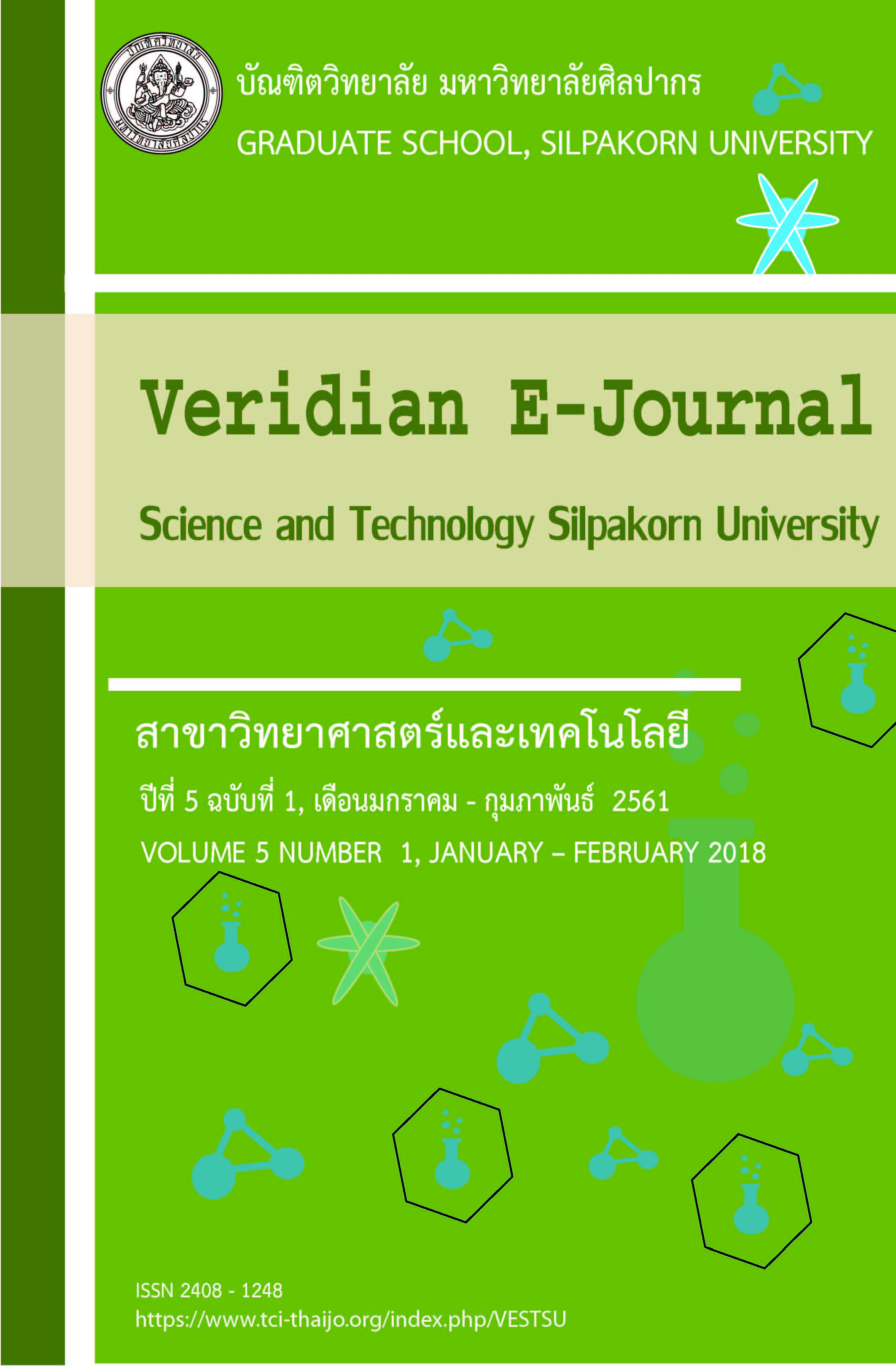การรับรู้สมรรถนะแห่งตนและการปฏิบัติตัวของผู้ติดเชื้อเอชไอวี/ผู้ป่วยเอดส์ที่สามารถควบคุมและไม่สามารถควบคุมปริมาณเชื้อไวรัสในร่างกาย (Perceived Self-Efficacy and Practice of HIV and AIDS Patient with Controlled and Uncontrolled of Viral Load)
Main Article Content
บทคัดย่อ
การศึกษาครั้งนี้เป็นการศึกษาเชิงสำรวจ (survey study) มีวัตถุประสงค์เพื่อเปรียบเทียบการรับรู้สมรรถนะแห่งตนและการปฏิบัติตัวเพื่อป้องกันความล้มเหลวในการรักษาของผู้ติดเชื้อเอชไอวี/ผู้ป่วยเอดส์กลุ่มที่สามารถควบคุมและไม่สามารถควบคุมปริมาณเชื้อไวรัสเอชไอวีขณะรักษาด้วยยาต้านไวรัส ของคลินิกศูนย์รวมใจ โรงพยาบาลตาคลี จำแนกเป็น 3 ด้าน ได้แก่ (1) ด้านการรับประทานยาอย่างมีประสิทธิภาพ (2) ด้านการป้องกันโรคติดเชื้อฉวยโอกาสและ (3) ด้านการป้องกันการรับเชื้อเพิ่ม โดยใช้เครื่องมือที่พัฒนาขึ้นในการศึกษาเก็บข้อมูลจากผู้ติดเชื้อเอชไอวี/ผู้ป่วยเอดส์ทุกราย (259 คน) ที่เข้ารับการรักษาภายในคลินิกศูนย์รวมใจ ณ วันที่ 1 ตุลาคม 2559
ผลการศึกษาพบว่าผู้ติดเชื้อเอชไอวี/ผู้ป่วยเอดส์มีคะแนนการรับรู้สมรรถนะแห่งตนและการปฏิบัติตัวเพื่อป้องกันความล้มเหลวในการรักษาโดยรวมอยู่ในระดับสูง (4.44±0.41 และ 4.27±0.40 ตามลำดับ) จากคะแนนเต็ม 5 คะแนน
เมื่อการเปรียบเทียบการรับรู้สมรรถนะแห่งตนในด้านการรับประทานยาอย่างมีประสิทธิภาพของผู้ติดเชื้อเอชไอวี/ผู้ป่วยเอดส์ระหว่างกลุ่มที่สามารถควบคุมและกลุ่มที่ไม่สามารถควบคุมปริมาณเชื้อไวรัสเอชไอวี พบว่ามีความแตกต่างกันอย่างมีนัยสำคัญทางสถิติ (p-value < 0.05) ในประเด็นการบอกอาการข้างเคียงชนิดที่ไม่รุนแรง (คะแนนเฉลี่ย 3.75 และ 2.97), อาการข้างเคียงชนิดที่รุนแรง (คะแนนเฉลี่ย 3.42 และ 2.70) และอาการแพ้ยาที่อาจเกิดขึ้นกับตนเอง (คะแนนเฉลี่ย 3.86 และ 3.00) ส่วนด้านการป้องกันโรคติดเชื้อฉวยโอกาสที่มีความแตกต่างกันอย่างมีนัยสำคัญทางสถิติ (p-value < 0.05) ได้แก่ การหลีกเลี่ยงการเข้าไปอยู่ในสถานที่แออัด (คะแนนเฉลี่ย 3.84 และ 3.17), การใช้ผ้าปิดจมูกกรณีเข้าไปในสถานที่แออัด (คะแนนเฉลี่ย 3.55 และ 2.73) และความสามารถในการเข้าใจผลการตรวจระดับภูมิต้านทานชนิด CD4 (คะแนนเฉลี่ย 4.36 และ 3.63) ส่วนด้านการป้องกันการรับเชื้อเพิ่มที่มีความแตกต่างกันอย่างมีนัยสำคัญทางสถิติ (p-value < 0.05) ได้แก่ การเตรียมถุงยางอนามัยสำหรับเปลี่ยนกรณีที่ถุงยางชำรุดหรือมีเพศสัมพันธ์ซ้ำ (คะแนนเฉลี่ย 4.46 และ 4.10)
เมื่อเปรียบเทียบการปฏิบัติตัวเพื่อป้องกันความล้มเหลวในการรักษาในด้านการรับประทานยาอย่างมีประสิทธิภาพของผู้ติดเชื้อเอชไอวี/ผู้ป่วยเอดส์ระหว่างกลุ่มที่สามารถควบคุมและกลุ่มที่ไม่สามารถควบคุมปริมาณเชื้อไวรัสเอชไอวี พบว่ามีความแตกต่างกันอย่างมีนัยสำคัญทางสถิติ (p-value < 0.05) ในประเด็นการรับประทานยาต้านไวรัสคลาดเคลื่อนไม่เกิน 30 นาที (คะแนนเฉลี่ย 4.48 และ 3.90), การรับประทานยาต้านไวรัสเอชไอวีอย่างต่อเนื่องโดยไม่หยุดยาระหว่างการรักษา (คะแนนเฉลี่ย 3.69 และ 3.97), การสังเกตอาการข้างเคียงชนิดที่ไม่รุนแรงด้วยตนเองอย่างสม่ำเสมอ (คะแนนเฉลี่ย 4.19 และ 3.27), การสังเกตอาการข้างเคียงชนิดที่รุนแรงด้วยตนเองอย่างสม่ำเสมอ (คะแนนเฉลี่ย 3.58 และ 3.30) และการจัดการอาการผิดปกติหรืออาการข้างเคียงที่ไม่รุนแรงด้วยตนเอง (คะแนนเฉลี่ย 3.69 และ 3.20) ส่วนด้านการป้องกันโรคติดเชื้อฉวยโอกาสที่มีความแตกต่างกันอย่างมีนัยสำคัญทางสถิติ (p-value < 0.05) ได้แก่ การคำนึงถึงการป้องกันโรคติดเชื้อฉวยโอกาสในการใช้ชีวิตประจำวัน (คะแนนเฉลี่ย 4.63 และ 4.40), การใช้ผ้าปิดจมูกเมื่อเข้าไปในสถานที่แออัด (คะแนนเฉลี่ย 3.41 และ 2.43) และความสามารถในการทราบหรือเข้าใจผลการตรวจระดับภูมิต้านทานชนิด CD4 ของตนเอง (คะแนนเฉลี่ย 4.26 และ 3.67) ส่วนด้านการป้องกันการรับเชื้อเพิ่มที่มีความแตกต่างกันอย่างมีนัยสำคัญทางสถิติ (p-value < 0.05) ได้แก่ การใช้อุปกรณ์มีคมแยกจากผู้อื่น (คะแนนเฉลี่ย 4.50 และ 4.03)
ข้อมูลที่ได้จากผลการวิจัยครั้งนี้สามารถนำไปปรับปรุงการจัดโปรแกรมเสริมสร้างการรับรู้สมรรถนะแห่งตนที่เหมาะสมแก่ผู้ติดเชื้อเอชไอวี/ผู้ป่วยเอดส์ เพื่อให้ผู้ติดเชื้อเอชไอวี/ผู้ป่วยเอดส์มีความเชื่อมั่นในการปฏิบัติพฤติกรรมภายใต้ความรู้ ความเข้าใจและทักษะที่ถูกต้อง
This research was survey study aiming to compare perceived self-efficacy and practice for prevention of treatment failure between AIDS patients with controlled and uncontrolled of viral load who receiving antiretroviral drugs in SUN-RUAM-JAI clinic, Takhli Hospital in 3 dimension, including (1) effective medical intake (2) prevention of opportunistic infection and (3) prevention of HIV transmission by the developed questionaire was use to collect data from 259 HIV/AIDS patient of SUN-RUAM-JAI clinic since 1st October 2016.
The results indicated that HIV/AIDS patients had high level of perceived self-efficacy and practice for prevention of treatment failure (4.44±0.41 and 4.27±0.40 respectively) from total score of 5 points.
The comparison of each dimension of self-efficacy between HIV/AIDS there were with control of viral load and these with uncontrolled viral load showed there were statistical significant difference (p-value < 0.05) in effective medical intake dimension; identification of non-severe side effects (mean score 3.72 and 2.97), severe side effects (mean score 3.42 and 2.70) and drug allergy that might occur (mean score 3.86 and 3.00). these were statistical significant difference (p-value < 0.05) in prevention of opportunistic infection dimension; avoiding crowded place (mean score 3.84 and 3.17), wearing face mask in crowded place (mean score 3.55 and 2.73) and understanding in the result of CD4 cell count (mean score 4.36 and 3.63). there were statistical significance difference (p-value < 0.05) in prevention of HIV transmission between AIDS patient dimension; preparing spare condom in case of damaged condom or repeated sex (mean score 4.46 and 4.10).
The comparison of practice for treatment failure prevention between HIV/AIDS patients with control of viral load and those with uncontrolled viral load showed that there were statistical significant difference (p-value < 0.05); effective medical intake dimension; antiretroviral drug intake within 30 minutes (mean score 4.48 and 3.90), continuous antiretroviral drug intake during treatment (mean score 3.69 and 3.97), regular self-observation on non-severe side effects (mean score 4.19 and 3.27), regular self-observation on severe side effects (mean score 3.58 and 3.30) and self-management on non-severe symptoms or side effects (mean score 3.69 and 3.20). these were statistical significant difference (p-value < 0.05) in prevention of opportunistic infection dimension; awareness on preventing opportunistic infection in daily life (mean score 4.63 and 4.40), wearing face mask in crowded place (mean score 3.41 and 2.43) and understanding in the result of CD4 cell count (mean score 4.26 and 3.67). these were statistical significance difference (p-value < 0.05) in prevention of HIV transmission between AIDS patient; using personal edged tool (mean score 4.50 and 4.03).
From results of this study, patient care team should be improve appropriate self-efficacy development program for HIV/AIDS patients for increasing their confidence in practicing with proper knowledge, understanding, and skills.

